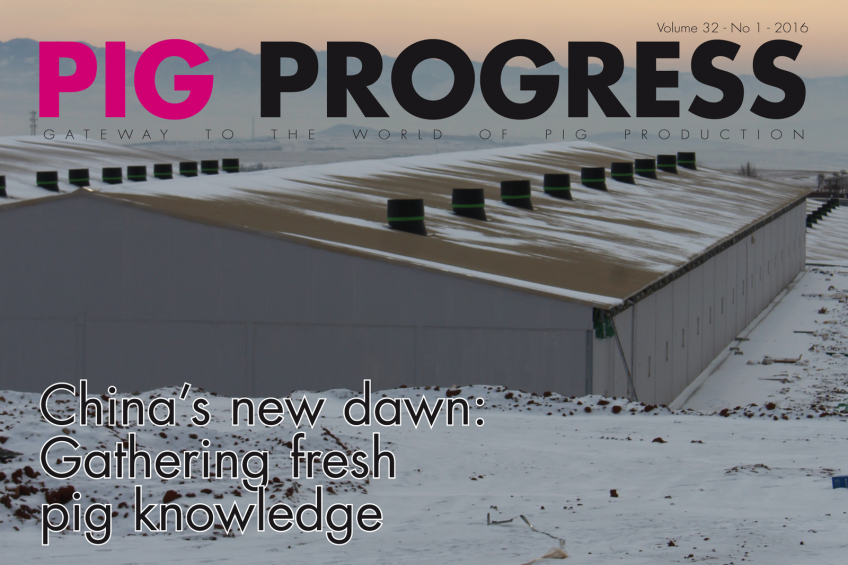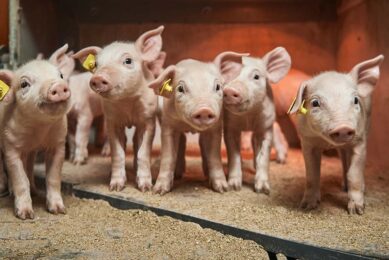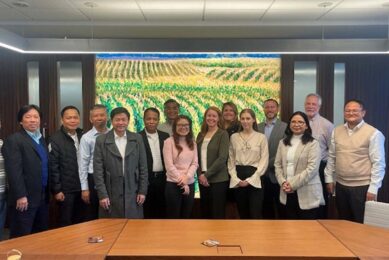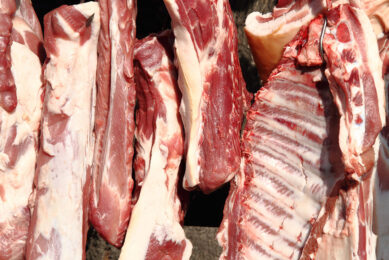Latest issue: Visiting a Chinese pig project

China and Colombia are just a few of the countries receiving ample attention in the new edition of Pig Progress that has just become available in print as well as in the digital version of the magazine.
Late 2015, Pig Progress editor Vincent ter Beek travelled to northern China to discover everything about a prominent breeding project by one of the leading pig producers in China, the Wens Group. Despite the freezing cold, the visit yielded an insightful picture into the latest developments on the ground in China. Pages 20-23.
Pig industry in Colombia
Colombia is also a country which gets plenty of attention. In a well-documented analysis, author and well-travelled pig expert Benny van Haandel zooms in on the country that forms a bridge between Middle and South America. What is the status of the pig business in the country and how has PEDv affected the country’s pig industry? Pages 12-14.
Breeding high-resistant pigs
Rather than focusing on breeding pathogen-free pigs, a Thai network chooses to focus on breeding high resistance pigs. The concept SiamPigs has gained popularity over the last few years. It also serves an additional focus: by creating own breeding conditions, it is also easier to respond to typical meat demands in the Thai market. The brain behind the concept, Dr Sakchai Topanurak, explains. Pages 29-31.
When a high health situation makes a difference
With antibiotics usage receiving increasing scrutiny all over the world, also the Canadian Prairie Swine Centre has been looking into alternatives. When doing a trial with feeding flaxseed to weaner pigs, the centre came to realise that in a very high health situation, antibiotics do not make any difference. Pages 8-10.
Alternative growth promotion
Around the theme ‘alternative growth promotion’ it is worth mentioning a couple of articles. The molecule alpha-monolaurin forms the key ingredient of an additive of Dutch company Framelco, which has shown to have antimicrobial activity. It has been shown to suppress Streptococcus infections when preventative use is replaced with this additive. Pages 24-25.
What can be achieved with 2 other feed additives is explained in a contribution by Tim Goossens of Nutriad, Belgium. The mode of action of both butyrate as well as botanicals is explained in an article, titled ‘Feed additives go beyond nutritional value’. Pages 26-28.
Controlling PEDv outbreaks
But what to do when disease breaks out and all you can do is try and avoid that it goes to your neighbours? Such was the situation when Canada felt confronted with PEDv – but the virus was reasonably kept under control in Canada. In an interview with Harry Siemens, veterinarian Dr Doug MacDougald explains how. Pages 16-17.
| Dr Doug MacDougald at the Banff Pork Seminar in 2014, where he announced the first case of PED virus in Canada during the Boar Pit Session. |
This month’s columns zoom in on new technical terms (John Gadd, page 11) and on auditing in the US pig industry (Monique Pairis-Garcia, page 36).
The digital version of the magazine can be read after a quick registration.
 Beheer
Beheer


















 WP Admin
WP Admin  Bewerk bericht
Bewerk bericht